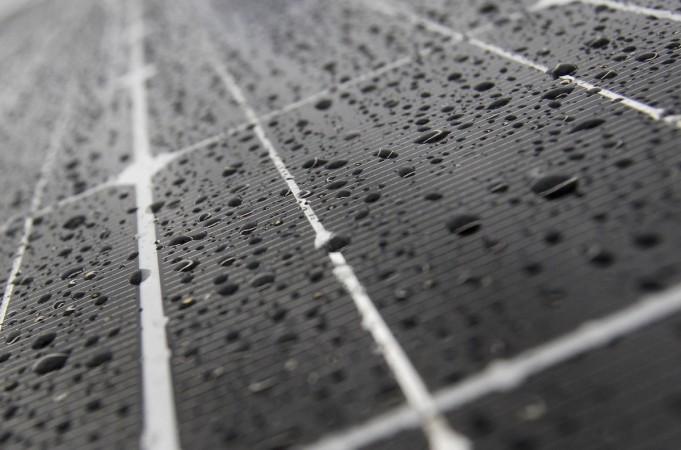
Much like making hay, the best time to produce solar energy is when the sun shines. Researchers in China have discovered that by using graphene; energy from solar panels is possible even when it's raining.
Graphene is essentially a one-atom thick layer of carbon, arranged in a honeycomb like structure. It is essentially graphite that is only one atom thick. Graphite, being able to conduct electricity, lends graphene the ability to do the same.
Researchers at Ocean University of Qingdao in China used a modified dye-sensitised solar cell, a thin, film-type solar panel, with a layer of graphene on top. When they simulated rain using salty water, they were able to generate electricity. What happened was that when the salty water hit the surface of the solar panels, the ionised salt particles in the water (ammonium, sodium and calcium, which are positively charged) were separated from the water to produce electricity.
The tests resulted in a 6.53 percent energy conversion — dye-sensitised solar cells, which were used in this experiment, have an efficiency of about 14.1 percent. While this isn't much, it is still very promising as the technology is merely a proof of concept and still has a long way to go in terms of development. Meanwhile, the researchers believe this will definitely help in the evolution of solar panels.
Read more: GE uses CO2 to solve solar energy's biggest drawback
As rainwater isn't inherently salty and comes mixed with a variety of other ions, the future course of action for this technology is to figure out how to generate electricity in situations closer to what we experience in real life.
The research paper was published in Angewandte Chemie and can be accessed here.











![Miss Universe 2024: India's Rhea Singha slayed swimsuit round but failed to reach Top 12 [Watch]](https://data1.ibtimes.co.in/en/full/806361/miss-universe-2024-indias-rhea-singha-slayed-swimsuit-round-failed-reach-top-12-watch.jpg?w=220&h=138)




